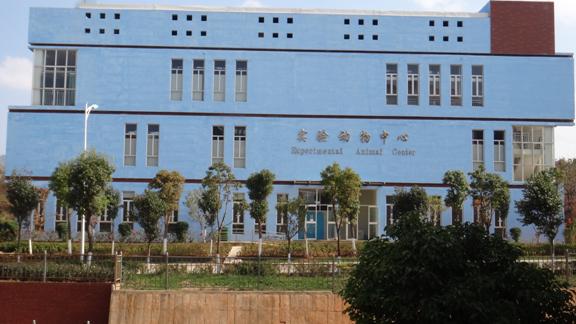重点推介科技成果项目
●项目名称:肿瘤转化医学
●所属单位:昆明理工大学
●所属领域:
化工□、石油□、生物✓、医药□、能源□、材料□、资源□、环境□、装备□、机电一体化□、信息□、其它□
●项目简介:(包括背景、技术要点及先进性、技术成果、技术或产品应用前景,经济效益分析等1000字以内)
转化医学是近年来国际医学健康领域出现的新概念,其宗旨是将医学生物学基础研究成果迅速有效的转化为临床可用的技术、方法和药物,在实验室到病房(Bench To
Bedside, 简称B2B)之间架起一条快速通道。转化医学强调以临床为中心,从临床工作中发现和提出问题,将基础研究最新成果快速有效地转化为临床医学技术。
转化医学的中心环节是生物标志物的研究,包括开发和利用各种组学方法以及分子生物学数据库,筛选各种生物标志物,用于疾病危险度估计、疾病诊断与分型、治疗反应和预后的评估,以及治疗方法和新药物的开发。
中国每年新增220万名癌症患者,每年近130万人死于肿瘤,肿瘤治疗历经了手术、放疗、化疗及生物治疗,由传统抗肿瘤治疗转向靶向、个性化抗肿瘤治疗。因此,及时有效地将最新基础研究成果转化应用于临床诊断、治疗策略、方案和技术已经成为肿瘤转化医学研发的焦点。
针对云南省肿瘤转化医学的实际发展需求,2011年昆明理工大学与云南省第一人民医院整合双方在学科、人才、技术、配套、产学研结合和国际交流等多方面的优势,成立昆明理工大学医学院,共同建设云南省肿瘤转化医学工程技术研究中心,在基础研究与临床医学之间架起桥梁,缩短从研究到应用的时间,以更好地服务病人、服务社会、创造经济价值。
通过两年的建设,已充分融合了基础与临床研究人员的优势,形成了科研、临床、产业互为支撑的格局。在以下方面开展工作:建立肿瘤标本库,筛查、认定云南地区高发肿瘤的肿瘤标志物,确定肿瘤早期诊断、治疗靶点;建立个性化基因诊断、治疗策略,提高治疗的有效性,降低复发率;依托云南省丰富的药用植物资源,结合抗肿瘤靶点,构建从分子、细胞到动物模型的靶向药物筛选平台,将本地资源开发应用于肿瘤预防和靶向治疗;研发肿瘤细胞治疗新技术,分离、鉴定云南地区高发肿瘤干细胞,建立肿瘤干细胞药物筛选模型。本中心的建立为云南省肿瘤转化医学提供了一个国内一流的共享的技术、服务平台。
●项目负责人简介:(包括固定电话、手机、传真、E-mail等,需注明党外知识分子身份或留学人员身份、海外留学经历,100字左右)
罗瑛,电话:0871-65920753,手机:13987631893,email:luoyingabc@yahoo.com
云南省留学回国人员联谊会理事
1997年毕业于军事医学科学院,获理学博士。2000赴美,先后在马里兰大学医学院,哈佛医学院做博士后研究,2005被MD Anderson 肿瘤研究中心聘为Instructor。2007年应聘为昆明理工大学生命科学与技术学院教授。2008年入选云南省中青年学术技术带头后备人才、教育部“新世纪优秀人才”,2010年入选云南省“百名留学回国人才”。2011年主持与云南省第一人民医院共同申报获准了“云南省肿瘤转化医学工程技术研究中心”并担任主任。自回国以来,带领课题组申请获准主持国家自然科学基金面上项目8项,国家自然科学基金国际合作项目2项,参与国家自然科学基金联合基金2项。另主持云南省重点课题1项,承担了普洱市“科学普洱计划”项目之一。回国后以通讯作者发表研究论文25篇,其中SCI收录16篇。获发明专利授权2项。学术兼职有中国医药生物技术协会再生医学专业委员会理事,中国生物化学与分子生物学会医学生物化学与分子生物学分会青年委员会委员,中国衰老与抗衰老协会理事,美国癌症研究协会(AACR)会员。
● 附图:
有关项目的代表性图片资料(样品、装置、证书等),每张图片标注清楚名称。
“第八届国际头颈癌会议”(8th International Conference on Head and
Neck Cancer)荣获“最佳预防与早期诊断论文二等奖”(Best Prevention & Early Detection Paper:2nd Place)
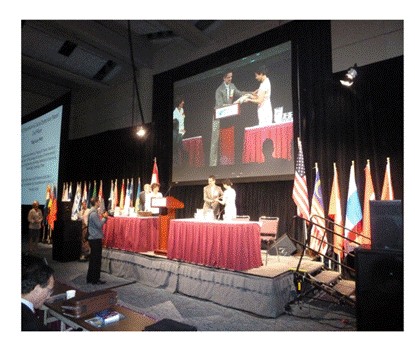
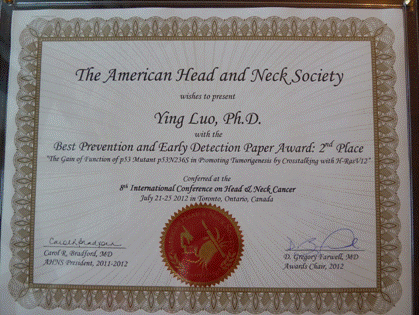
普洱茶研究成果获得国际媒体的大篇幅报道:
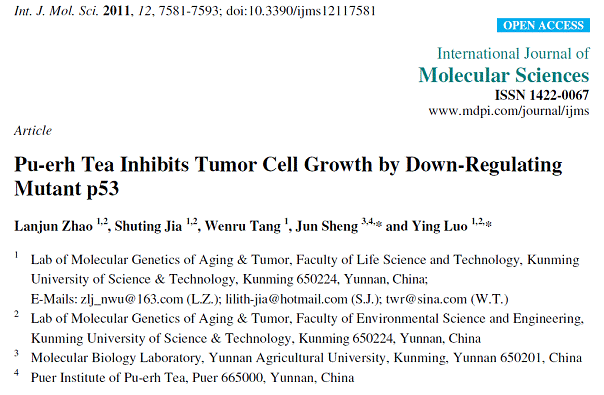
Pu-erh
Inhibits Tumor Cell Growth Activities
In a new study, using
water extracts of Pu-erh tea, researchers analyzed the tumor cell growth
inhibition activities on several genetically engineered mouse tumor cell lines.10 They found that at a concentration that did not
affect wild type mouse embryo fibroblasts growth, Pu-erh tea extracts could
inhibit tumor cell growth.
|

Song Dynasty Pu-erh Tea Party
|
The researchers also found thatPu-erh tea extracts
down-regulated the expression ofmutant p53 in tumor cells at the
protein level as well as messenger RNA* level. Curiously, while p53 (also known
as protein 53 or tumor protein 53) is a tumor suppressor protein that in humans
is encoded by the TP53 gene, p53 is crucial in multicellular organisms. There,
it regulates the cell cycle and thus functions as a tumor suppressor that is
involved in preventing cancer. However, a mutant p53 will no longer bind DNA in
an effective way, and, consequently, another needed protein will not be
available to act as the “stop signal” for cell division. Thus, mutant
p53 can cause cells to divide uncontrollably, and form tumors.
*
Messenger RNA (mRNA) encodes a chemical “blueprint” for a protein product. This
molecule is transcribed from DNA, and its function is to carry coding
information to the sites where proteins are created: the ribosomes. At these
sites, the nucleic acid polymer is translated into a polymer of amino acids (in
other words, a protein).
At a
concentration that did not affect
wild type mouse embryo fibroblasts
growth, Pu-erh tea extracts could
inhibit tumor cell growth.
The researchers also
found that Pu-erh tea treatment could slightly down-regulate both the
heat-shock proteins HSP70 and HSP90 in tumor cells. These data reveal the
action of Pu-erh tea on tumor cells and suggest the possible mechanism for
Pu-erh tea action, which explained its selectivity in inhibiting tumor cells
without affecting wild type cells. Altogether, the data sheds light on the
application of Pu-erh tea as an anti-tumor agent with low side effects.
The data
sheds light on
the application of Pu-erh tea as
an anti-tumor agent with
low side effects.
The
Importance of Selectively Killing Tumor Cells
The toxicity of
chemotherapeutic drugs has become one of the dominant issues in chemotherapy.
New developments in cancer fields have focused more and more on cancer
prevention, early diagnosis, and personalized medicine. Accordingly, chemicals
which target tumor specific molecules and selectively kill tumor cells have
become one of the most popular topics in drug screening.
In the Pu-erh/p53 study
using the wild type control and genetically engineered tumor cell lines as the
screening system, the researchers could easily differentiate the toxicity of
drug treatment to normal cells from the tumor cell growth inhibition activity.
As well, the specific genetic background provided advantages in identifying the
molecular target of the treatment.
专利证书:
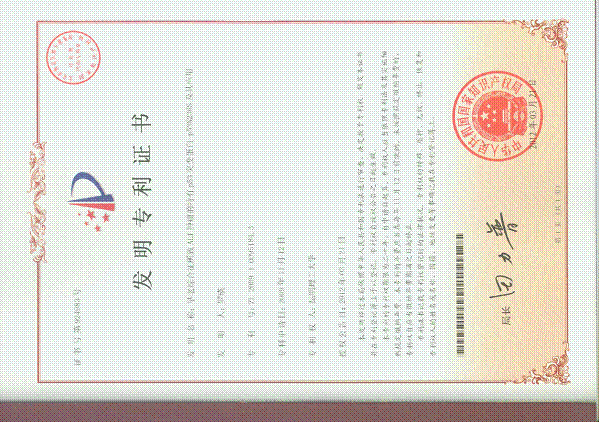

学校投资1000多万建成的SPF级实验动物中心
